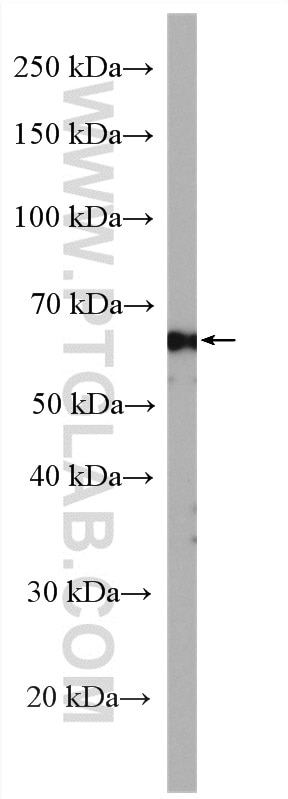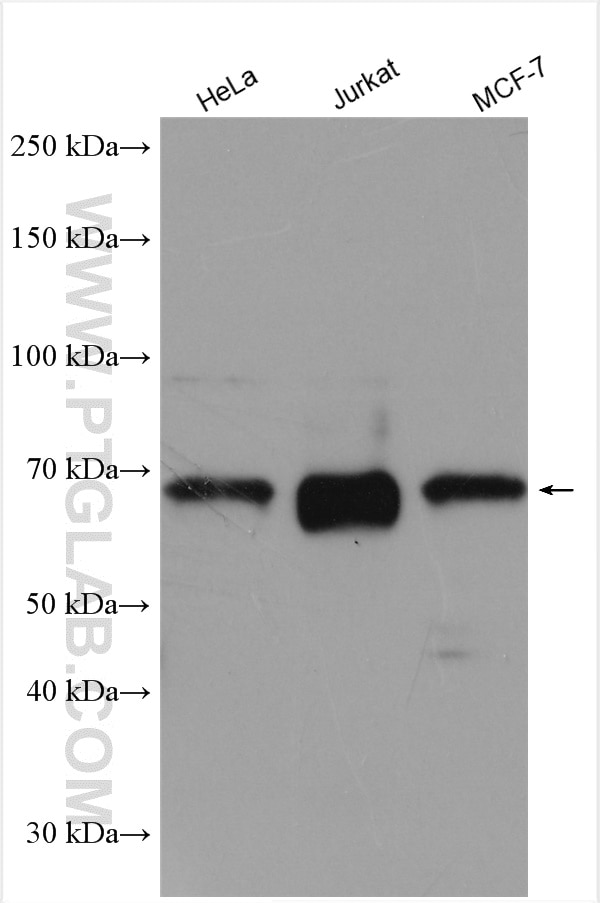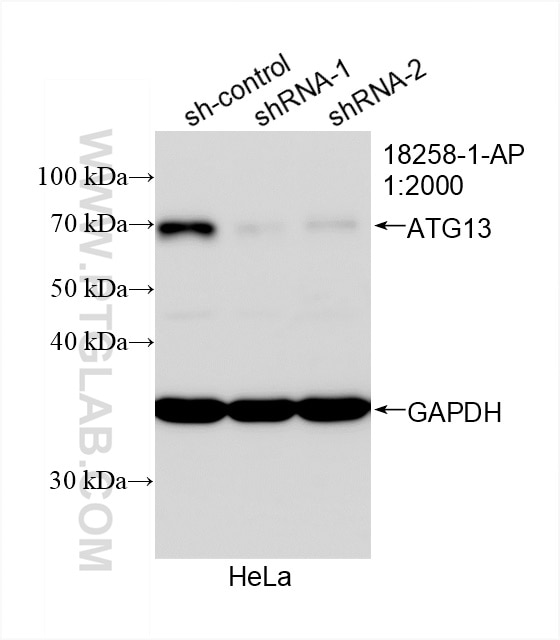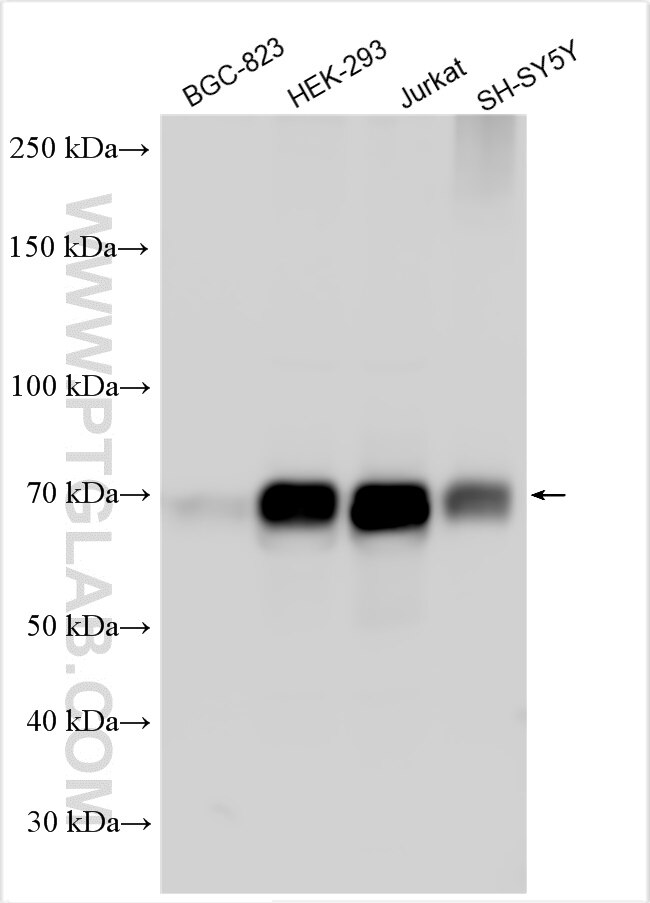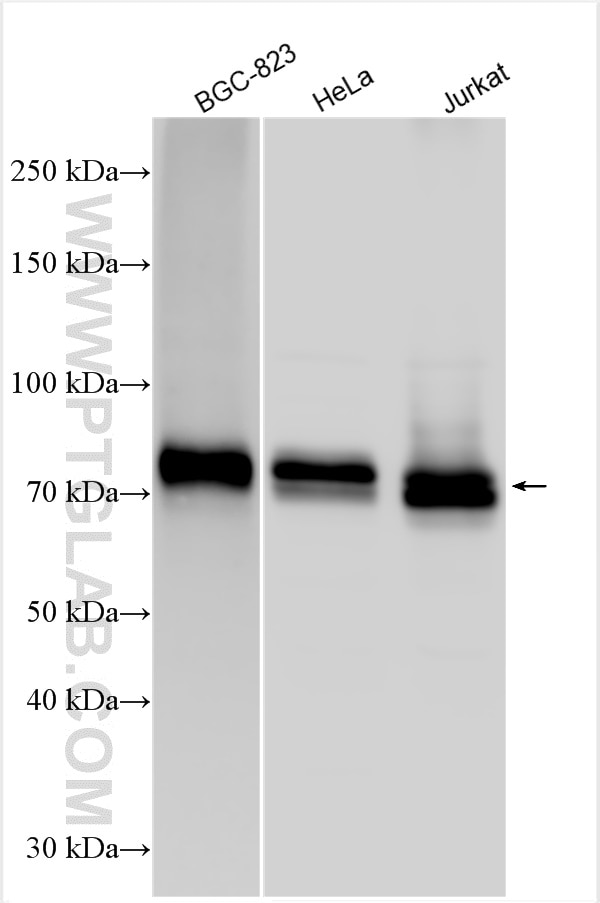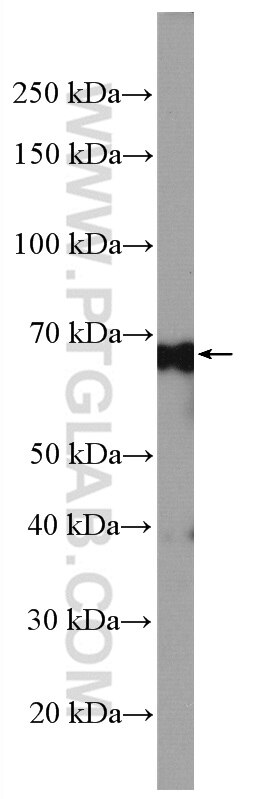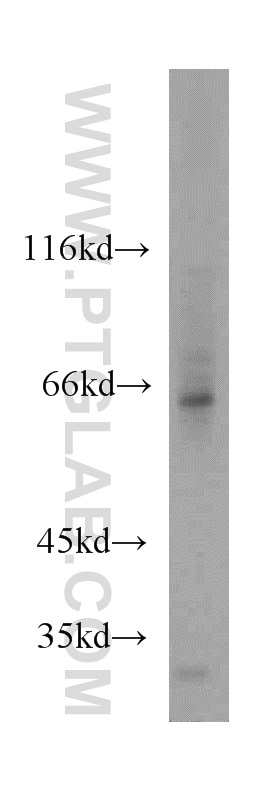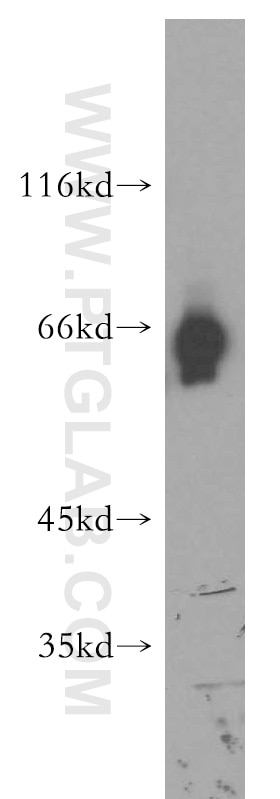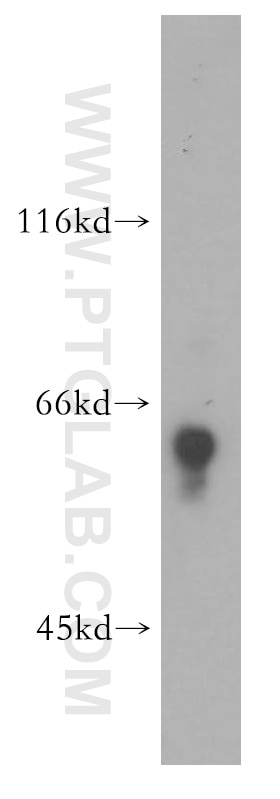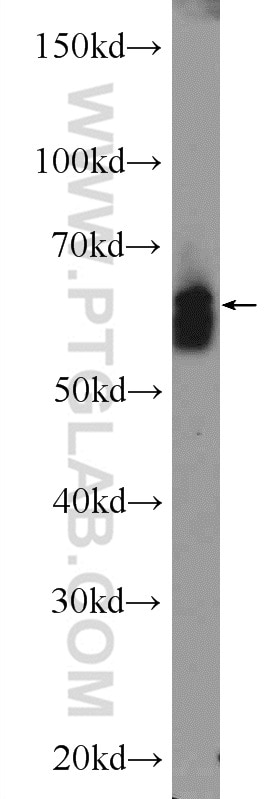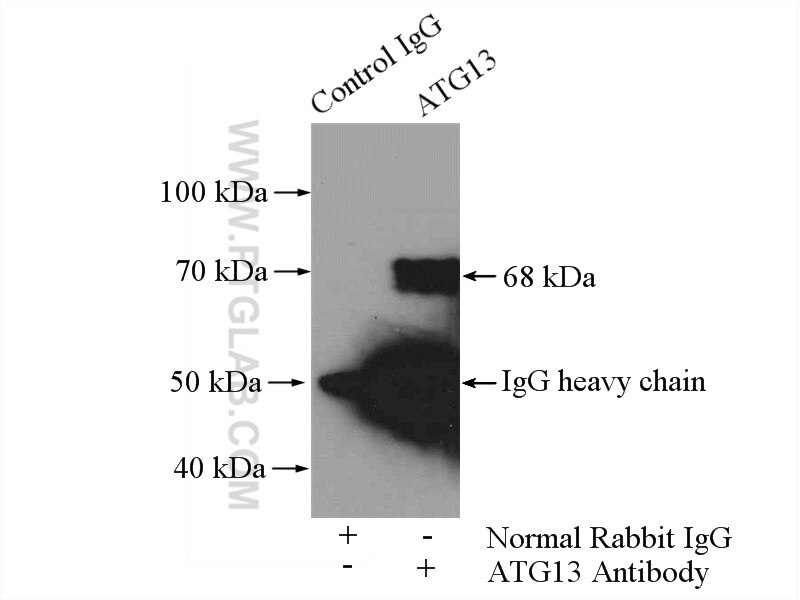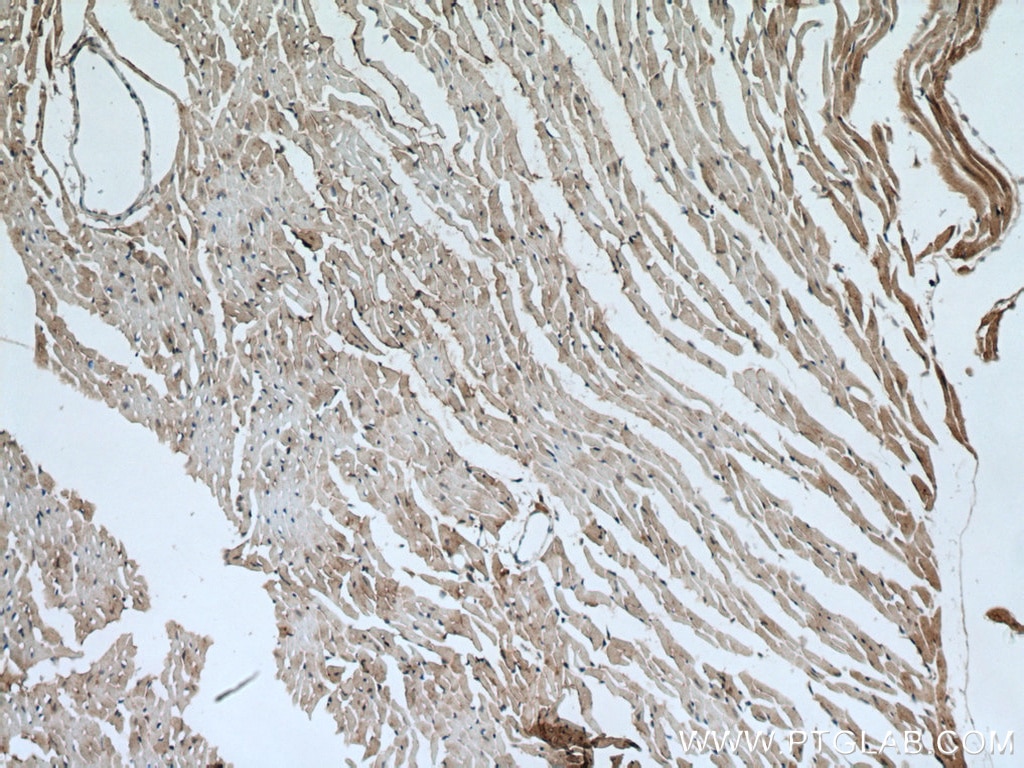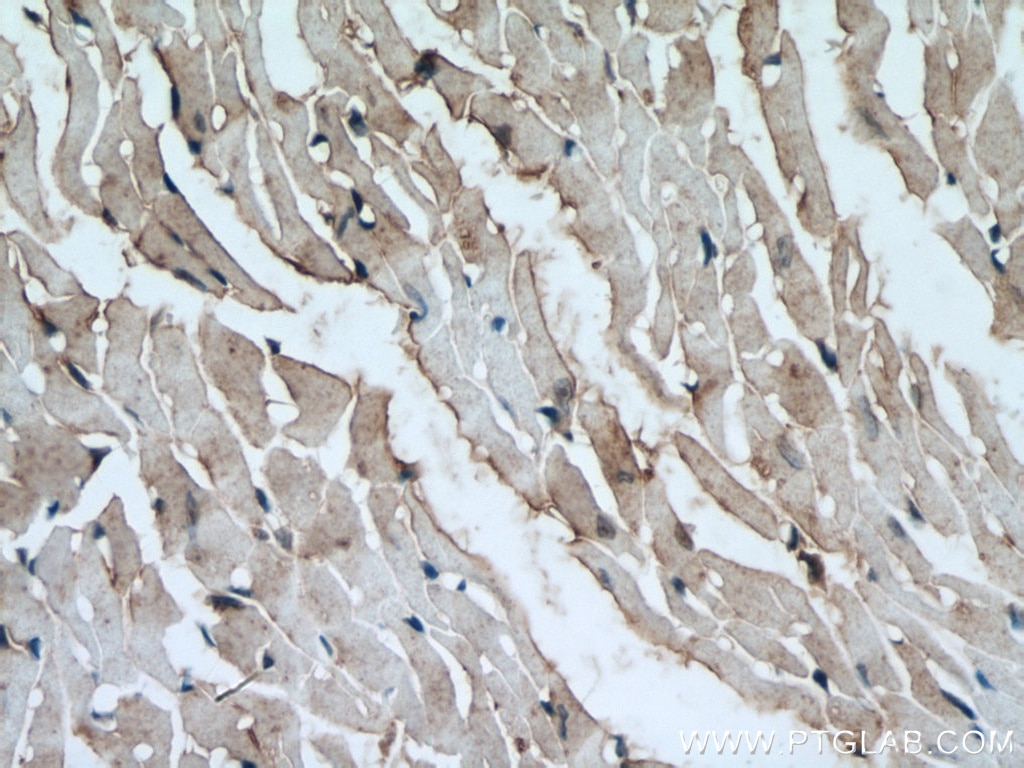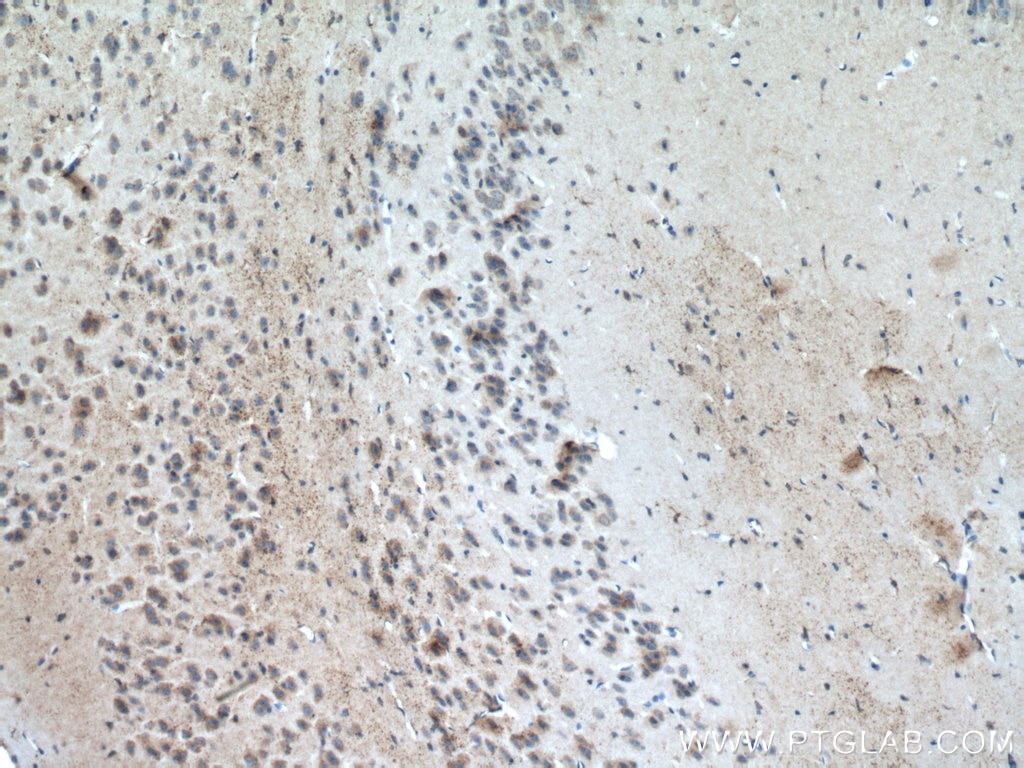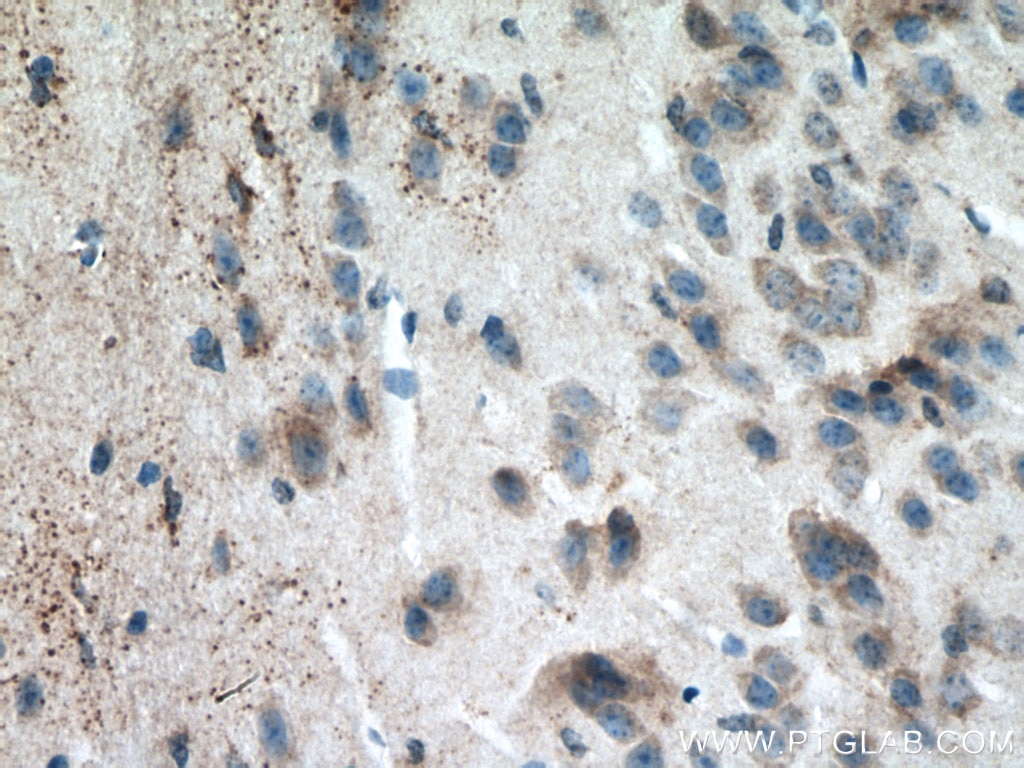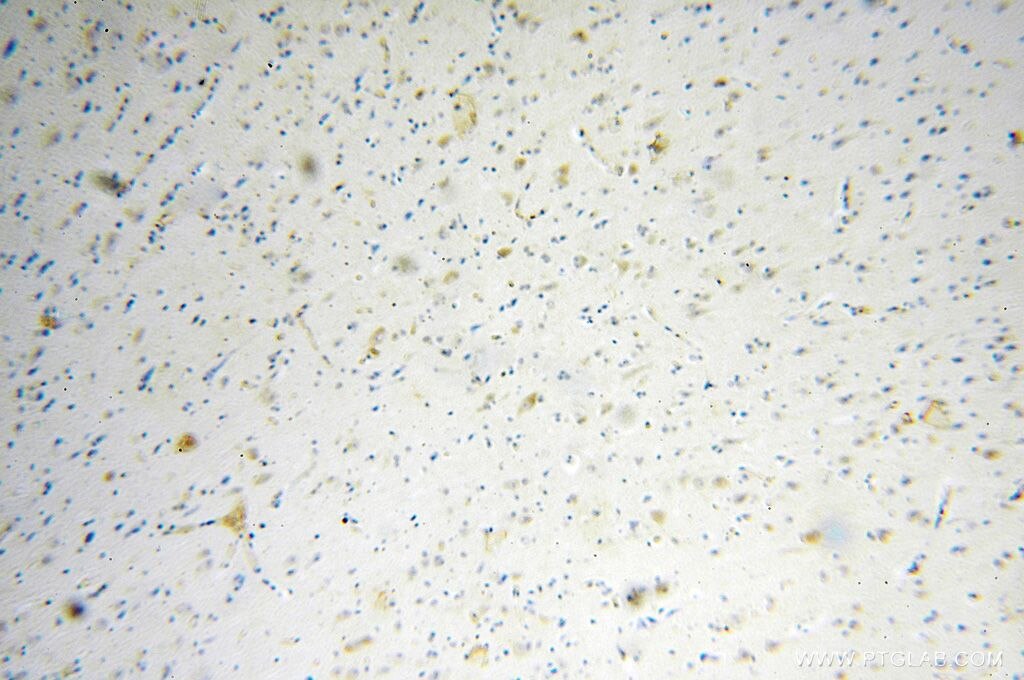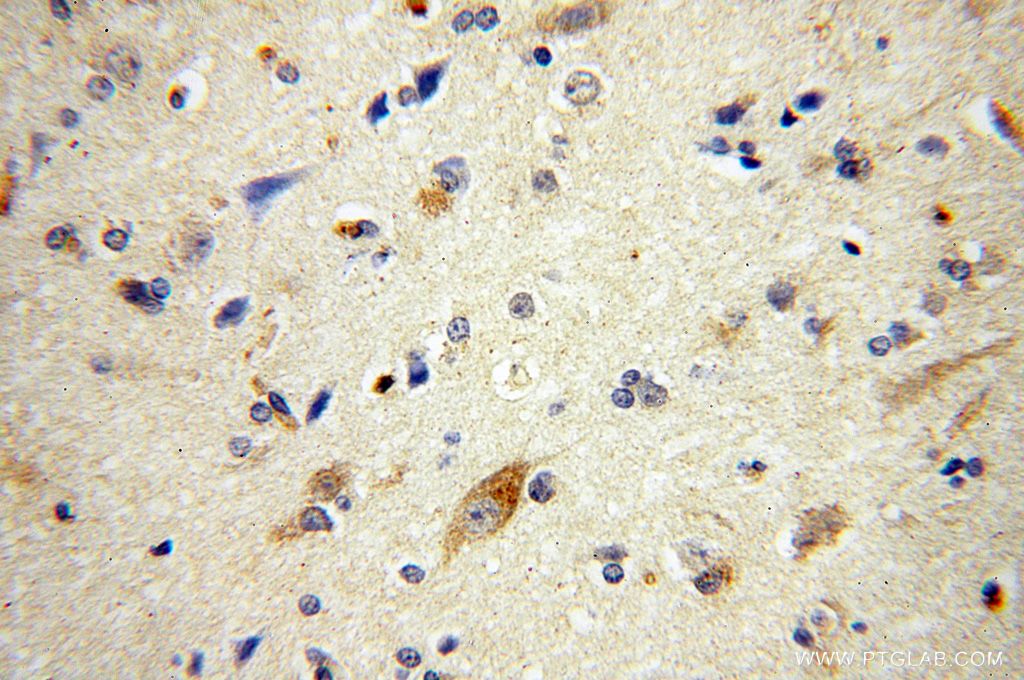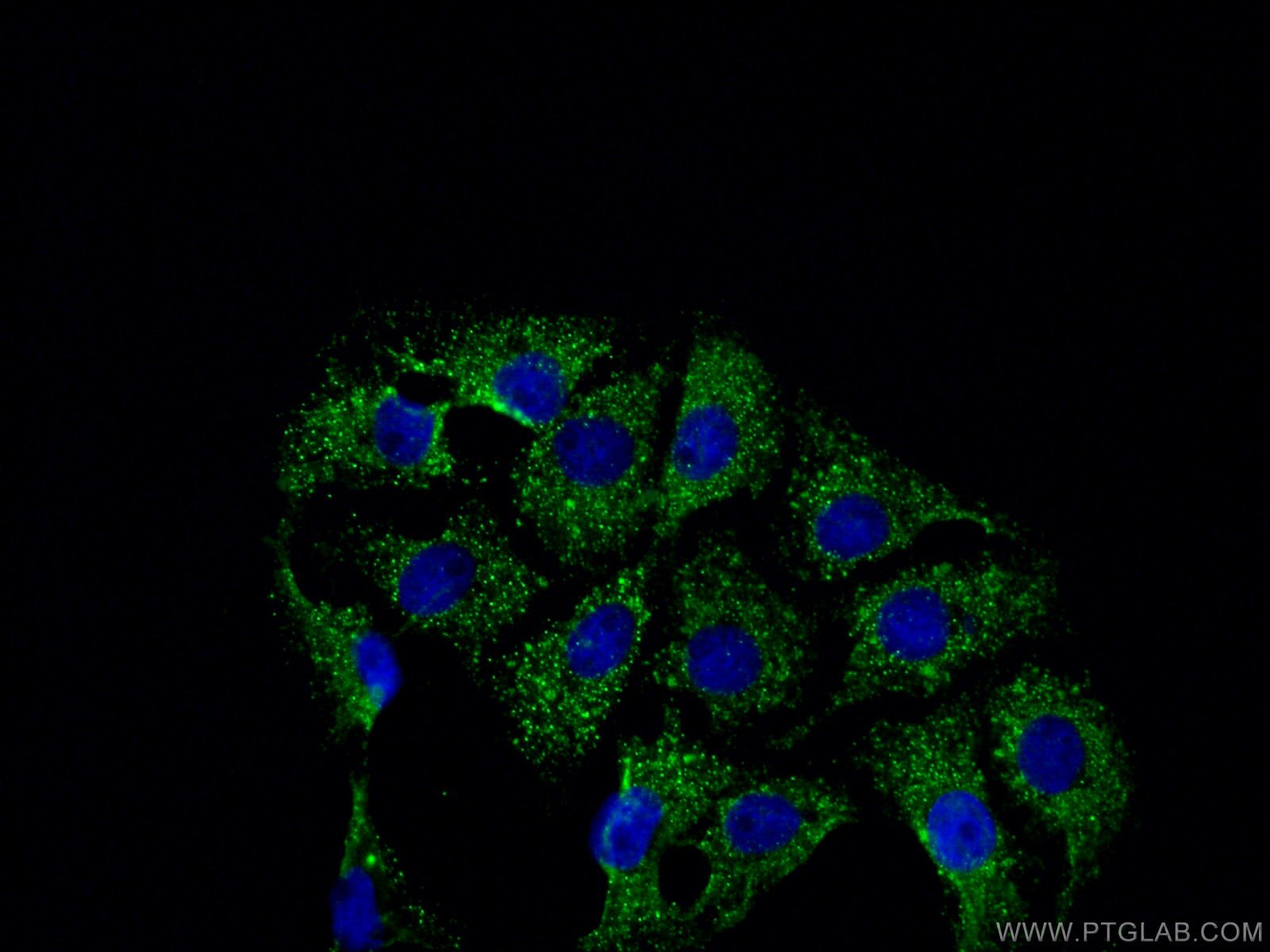- Phare
- Validé par KD/KO
Anticorps Polyclonal de lapin anti-ATG13
ATG13 Polyclonal Antibody for WB, IP, IF, IHC, ELISA
Hôte / Isotype
Lapin / IgG
Réactivité testée
Humain, rat, souris
Applications
WB, IHC, IF/ICC, IP, CoIP, ELISA
Conjugaison
Non conjugué
N° de cat : 18258-1-AP
Synonymes
Galerie de données de validation
Applications testées
| Résultats positifs en WB | cellules SH-SY5Y, cellules BGC-823, cellules HEK-293, cellules HeLa, cellules Jurkat, cellules MCF-7, tissu cérébral humain, tissu de cervelet de souris, tissu de thymus de souris, tissu testiculaire de souris |
| Résultats positifs en IP | cellules SH-SY5Y |
| Résultats positifs en IHC | tissu cardiaque de souris, tissu cérébral de souris, tissu cérébral humain il est suggéré de démasquer l'antigène avec un tampon de TE buffer pH 9.0; (*) À défaut, 'le démasquage de l'antigène peut être 'effectué avec un tampon citrate pH 6,0. |
| Résultats positifs en IF/ICC | cellules SH-SY5Y, |
Dilution recommandée
| Application | Dilution |
|---|---|
| Western Blot (WB) | WB : 1:500-1:1000 |
| Immunoprécipitation (IP) | IP : 0.5-4.0 ug for 1.0-3.0 mg of total protein lysate |
| Immunohistochimie (IHC) | IHC : 1:50-1:500 |
| Immunofluorescence (IF)/ICC | IF/ICC : 1:50-1:500 |
| It is recommended that this reagent should be titrated in each testing system to obtain optimal results. | |
| Sample-dependent, check data in validation data gallery | |
Applications publiées
| KD/KO | See 2 publications below |
| WB | See 15 publications below |
| IF | See 1 publications below |
| CoIP | See 1 publications below |
Informations sur le produit
18258-1-AP cible ATG13 dans les applications de WB, IHC, IF/ICC, IP, CoIP, ELISA et montre une réactivité avec des échantillons Humain, rat, souris
| Réactivité | Humain, rat, souris |
| Réactivité citée | rat, Humain, souris |
| Hôte / Isotype | Lapin / IgG |
| Clonalité | Polyclonal |
| Type | Anticorps |
| Immunogène | ATG13 Protéine recombinante Ag13090 |
| Nom complet | KIAA0652 |
| Masse moléculaire calculée | 57 kDa |
| Poids moléculaire observé | 57-63 kDa |
| Numéro d’acquisition GenBank | BC001331 |
| Symbole du gène | ATG13 |
| Identification du gène (NCBI) | 9776 |
| Conjugaison | Non conjugué |
| Forme | Liquide |
| Méthode de purification | Purification par affinité contre l'antigène |
| Tampon de stockage | PBS avec azoture de sodium à 0,02 % et glycérol à 50 % pH 7,3 |
| Conditions de stockage | Stocker à -20°C. Stable pendant un an après l'expédition. L'aliquotage n'est pas nécessaire pour le stockage à -20oC Les 20ul contiennent 0,1% de BSA. |
Informations générales
ATG13 is one component protein of the ULK1 complex which is required for autophagosome formation and mitophagy. ATG13 has two nutrient regulatory phosphorylation sites and the phosphorylation status of ATG13 affect regulation of autophagy by modulating enzyme activity and cellular localization of ULK1. Besides, it has been reported the nonautophagic function of ATG13 on cardiac development for ATG13-deficient embryos show myocardial growth defects.(PMID:27387056, 26801615, 26644405)
Protocole
| Product Specific Protocols | |
|---|---|
| WB protocol for ATG13 antibody 18258-1-AP | Download protocol |
| IHC protocol for ATG13 antibody 18258-1-AP | Download protocol |
| IF protocol for ATG13 antibody 18258-1-AP | Download protocol |
| IP protocol for ATG13 antibody 18258-1-AP | Download protocol |
| Standard Protocols | |
|---|---|
| Click here to view our Standard Protocols |
Publications
| Species | Application | Title |
|---|---|---|
J Clin Invest p53/microRNA-214/ULK1 axis impairs renal tubular autophagy in diabetic kidney disease. | ||
Autophagy The ALS-FTD-linked gene product, C9orf72, regulates neuronal morphogenesis via autophagy. | ||
Oxid Med Cell Longev Silencing TUFM Inhibits Development of Monocrotaline-Induced Pulmonary Hypertension by Regulating Mitochondrial Autophagy via AMPK/mTOR Signal Pathway | ||
Stem Cell Res Ther Chaperone-mediated autophagy plays an important role in regulating retinal progenitor cell homeostasis. | ||
Ecotoxicol Environ Saf Downregulation of beclin 1 restores arsenite-induced impaired autophagic flux by improving the lysosomal function in the brain. |
